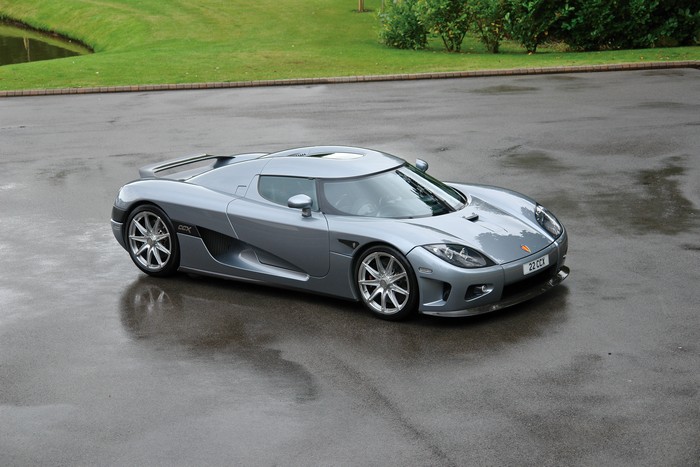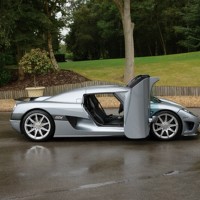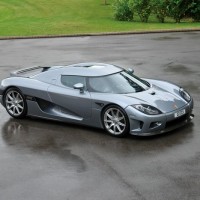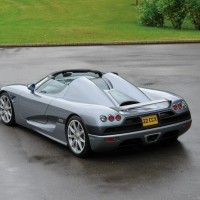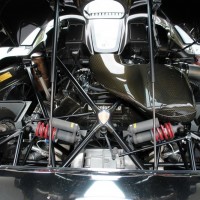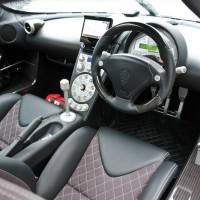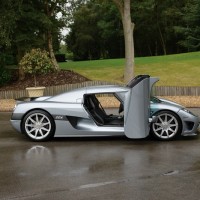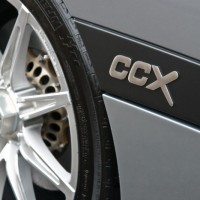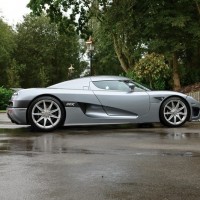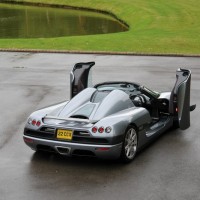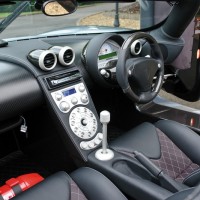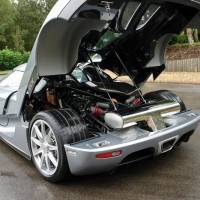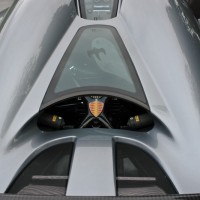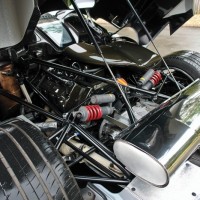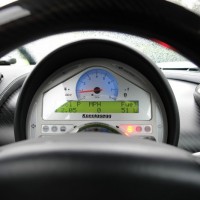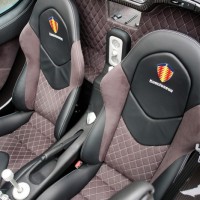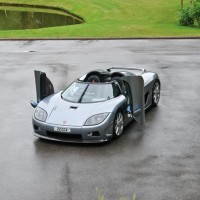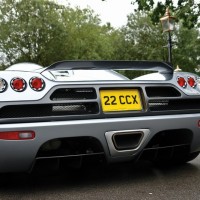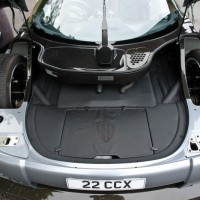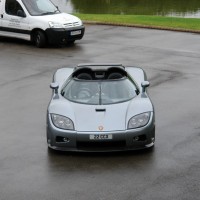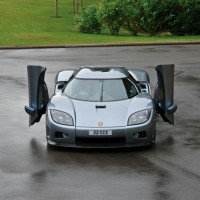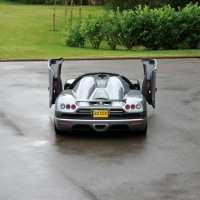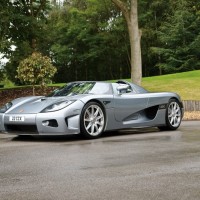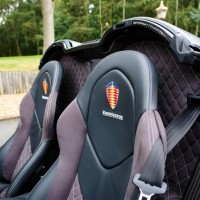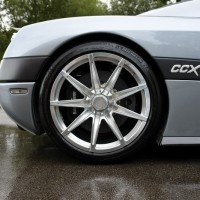The idea of building one’s own supercar to compete with the likes of Ferrari, Lamborghini, and McLaren would generally be considered ludicrous, what with the monumental strides these companies have made in automotive technology and performance over the past decades. How could one man’s vision compete with such established sporting pedigree and record-setting engineering?
From time to time, however, someone does indeed attempt such a feat and, on even rarer occasions, succeeds brilliantly. Such is the case with the Koenigsegg.
Christian von Koenigsegg created his supercar company in his own name in 1994; his aspiration was to build nothing short of the greatest supercar in history. Over the next three years, with help from a small but highly skilled group, a prototype was constructed using a radical carbon fiber tub and a litany of automotive engineering firsts. This car, named the Koenigsegg CC (Competition Coupé), was first publicly displayed at the Cannes Film Festival in 1997, and the reaction from public and press alike was overwhelming.
Confident his cars would find buyers, Christian left Cannes with nothing other than production on his mind. The first Koenigsegg customer car arrived in 2002, under the moniker CC8S. This car was entirely hand-built and set the stage for the minimalist, clean, efficient, and elegant styling that would characterize all future Koenigseggs.
Succeeding the CC8S was the CCR. The two cars shared many characteristics, with everything on the CCR improved, with tuned suspension, larger brakes, bigger wheels, and greater aero-work creating significantly more down force.
All these upgrades were made necessary because the 4.6-liter aluminum block, twin supercharged V8 had been tuned to produce an astonishing 806 horsepower. It would be this car that would dethrone the McLaren F1 as the fastest production car ever built, with a top speed of 242 mph — a record that had held for eight years.
Only 14 examples would be built before Christian Koenigsegg’s unwavering commitment to build the greatest supercar of all time had him create a third iteration: the CCX, with “X” commemorating the 10th anniversary of the first drive of the original CC.
A flat underside and tunnels in the back helped reduce the coefficient of drag to an incredibly low 0.30. Interior comfort was improved with better ergonomics, and an additional two inches of headroom were added to accommodate a helmet or taller drivers.
This car would be the first Koenigsegg to meet global emissions and crash safety standards. It could also run on 91 octane fuel and still produce identical power figures to the CCR. Amazingly, this engine is capable of accelerating the car from 0 to 60 mph in 3.2 seconds and return 14 mpg in the combined cycle. In the hands of Top Gear’s infamous “Stig,” a CCX fitted with an optional rear wing managed to lap the Top Gear track in a blistering 1:17.60 — toppling the Pagani Zonda F Roadster from its pedestal. In fact, the car sat atop the record board for nearly two years, a record time that its greatest rival, the Bugatti Veyron, would be unable to best. With this achievement, Koenigsegg became known globally and has since been regarded as the absolute zenith in “supercardom.”
SCM Analysis
Detailing
| Vehicle: | 2008 Koenigsegg CCX |
| Number Produced: | 14 |
| Original List Price: | $650,000 |
| Chassis Number Location: | On bulkhead in engine compartment |
| Alternatives: | Pagani Zonda, Bugatti Veyron, McLaren F1 |
This car, Lot 172, sold for $396,984 (£246,400), including buyer’s premium, at RM’s Automobiles of London auction on October 31, 2012.
When you think of how history is littered with supercars and other tasty automotive delights denied the long-suffering subjects of the NHTSA, it’s truly remarkable to think that Christian von Koenigsegg set out to build a “hypercar” that not only would meet demanding U.S. safety and 49 state emissions standards — but go further and meet California’s demands.
That Koenigsegg would look to do it not with an already smog-approved off-the-shelf engine but build a new one of his own just seems sheer lunacy.
There was even a super-ecological model built to run on E85 and E100. It isn’t surprising that the CCX won the accolade “Best Performing Green Exotic” from the DuPont Registry in 2009 — although one also wonders how stiff the competition was. That it also landed on a list of “10 Most Beautiful Cars” in Forbes magazine is something else entirely — although beauty is ultimately subjective and the demands of packaging and aerodynamics give little latitude in design for a performance car of this type.
Why own one?
Once past the fundamental question of who buys a car such as this and why, we’re left with considerations of relative usefulness and comparative value. I say “relative” and “comparative” because, of course, hypercars have no purpose in use. For the people who can afford them, these cars are grouped with extreme vacations, holiday homes, couture fashion and complicated watches as alternative buys.
If it comes down to pure bragging rights, the adherents of any of the cars in this class can find a stat or a record on which to hang their hat, whether it be horsepower, torque, top speed, acceleration through the gears — or even price. It’s unlikely that someone would trade in their McLaren F1 for a Koenigsegg because of what they saw the night before on “Top Gear,” but the element of one-upmanship these cars inspire cannot be ignored.
Comparing hypercars
In last month’s issue, my colleague and friend Colin Comer waxed eloquently about another of the cars in this class, the Bugatti Veyron (January 2013, Etceterini, p. 46).
Comer concluded that the Veyron is indeed the worthy heir of the products of Ettore Bugatti and quotes the estimable Jason Cammisa of Road & Track about the quality of the fiddly bits, fit and finish of the 1,000-horsepower coupe from Molsheim. Cammisa said the Veyron was much better than another of the VW Group’s offerings — the Lamborghini Aventador.
Considering that the full engineering and manufacturing might of one of the largest automotive entities in the world, Volkswagen Group, effectively competes on an even field with an artisan privateer from Sweden is remarkable. The psychic connection between Jean Bugatti and the present is arguably more powerful in Christian von Koenigsegg than it is in Wolfgang Dürheimer.
That being said, when it comes to value, there’s no contest. All can agree that the only one of the contemporary hypercars which is currently firmly in the collector sphere is the McLaren F1.
The Pagani Zonda has sold near its original MSRP for a while now, and in my humble opinion, it is a more complete package than the Koenigsegg. A step down, in the mere “supercar” arena, the Ford GT and Bugatti EB110 have held their value and stabilized in a narrow range near their original prices.
A look at the market
A Western Ferrari dealer offered a 2008 CCX with very low miles and an original MSRP of $650k last year for $1.5m, but there’s no evidence that the sale was consummated at that price. It seems more logical that this sale, at 40% of original list, is realistic — just as we saw in the half-price sale of the Veyron in the January issue.
The bottom line? Any of these cars are best bought for the experience of owning and driving them — without any thoughts of future appreciation.
What makes a car most interesting for collectors is a compelling backstory. It can be competition, which the Koenigsegg has so far not accomplished, technological advancement — which arguably it may have in a narrow focus — or sheer beauty and joy of driving, on which the jury is still out. As such, this sale, within the RM estimate, has to be judged market correct and not outstanding in any way. ?
(Introductory description courtesy of RM Auctions.)
